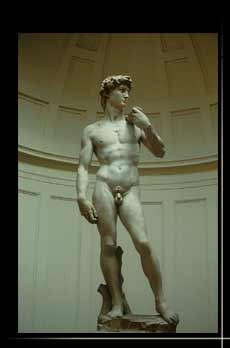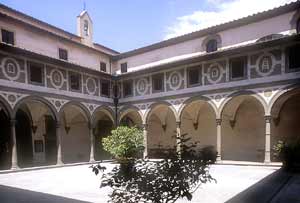|
 his
museum owes its fame to the extraordinary collection of works by
Michelangelo. Besides a collection of XIII-XVI century Florentine
painting, there is also a collection of plaster casts and another
of Russian icons. The gallery was established in 1784 by Grand Duke
Pietro Leopoldo, who wanted to offer the students at the adjoining
Accademia delle Belle Arti fine art works to use as examples. As
a result, only works from the Florentine school of painting were
chosen, in that they were the only ones considered capable of communicating
art. his
museum owes its fame to the extraordinary collection of works by
Michelangelo. Besides a collection of XIII-XVI century Florentine
painting, there is also a collection of plaster casts and another
of Russian icons. The gallery was established in 1784 by Grand Duke
Pietro Leopoldo, who wanted to offer the students at the adjoining
Accademia delle Belle Arti fine art works to use as examples. As
a result, only works from the Florentine school of painting were
chosen, in that they were the only ones considered capable of communicating
art.
In 1841, the works then present in the museum were put into chronological
order and in 1873 there arrived the most-widely viewed work in the
gallery - Michelangelo's David.
Michelangelo started work on this statue in 1502, when he was twenty-six,
and finished it two years later in 1504. He created it from an enormous
block of marble which had already been roughly-hewn by two other
sculptors, who abandoned it because they considered the marble unsuitable
for sculpture. It was produced on commission, the request being
for a work of religious significance to go in the cathedral. But
the political events of the period led to its being placed in front
of Palazzo Vecchio, where it remained until it was moved to the
Accademia for obvious reasons of conservation.
During the Second World War it was not moved, as many other art
works were, but remained in the Accademia, protected by an encircling
shield in cement and brick.
|
 |



